Multilingual SEO refers to fine-tuning content on your website for other languages. Read on to learn the importance of multilingual SEO and the multilingual SEO strategies you can use for your sites.
There are many search engine optimization aspects to keep in mind when developing a multilingual SEO website.
Elements that play a significant role in good multilingual SEO also enhance the general user experience.
All these ensure your website ranks high in different regions.
You must also ensure that users see the right pages depending on their location when it comes to multilingual SEO.
Similarly, you must take steps to avoid penalties for any content that may be considered duplicate by search engines.
Fortunately, Google recently released the best practices of multilingual SEO to ensure you improve your ranking.
But before we delve deeper into multilingual SEO, let us first understand what multilingual SEO means.
What Is Multilingual SEO?

Multilingual SEO essentially refers to the process of fine-tuning content on your site for various languages.
This means people in different markets and countries will find your website useful.
In other words, multilingual SEO optimizes your website for speakers of other languages other than your own.
Though most internet users use American/British English when looking for information, English is not the only language spoken in the world.
Actually, it is the third most spoken language worldwide after Chinese and Spanish.
So, it is vital to use multilingual SEO to engage as many people as possible across the world.
Even if you are only targeting the United Kingdom or the United States, you will find that not everyone who visits your site understands English.
It can be tempting to use Google translate, which non-English readers can use to translate content on SERPs.
But the reality is that you will get better results in terms of SEO and useful content if you use a noble multilingual SEO approach.
Importance of Multilingual SEO
A big chunk of the content online is in English.
Nevertheless, there is more to the web than just those websites.
Actually, some of the largest e-commerce sites and social media channels on the planet rarely use English at all.
The more the number of languages you incorporate into your site, the wider the audience you can engage.
For instance, adding Spanish allows you to reach more than 430 million people.
And mark you, that is one example.
If you add Italian, you will connect with 63 million more users.
And if you add Korean will help you connect with over 70 million more people!
That said, keep in mind that adding a new language to your site is not enough to enhance traffic.
If you want to engage more people, you must consider search engine optimization as well when translating.
This means ranking for keywords that you did not consider in your website’s original language, translating your page’s metadata, and making it seamless to switch between one version to another of your site.
Adding even one more language to your site is a big step towards increasing your site traffic.
And with the right plugin, the endeavor becomes easier.
But it may take a while to localize every aspect of the site.
The more detailed your website is, the more the work it entails.
Types of Domain and URL Structures
Generic top-level domains (gTLDs)
GTLD(generic top-level domain) is not linked to any country.
Instead, they are connected to a specific domain class, including high desirable and original TLDs like .org for non-profits, .edu for educational institutions, and .com for commercial businesses.
There are hundreds of new gTLDs that have emerged recently, such as .info, .shop, and .biz.
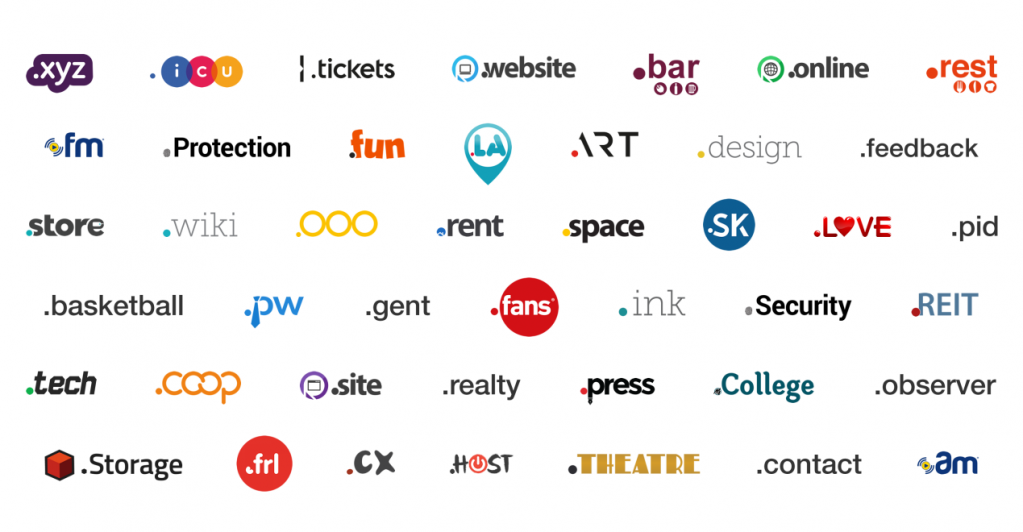
Country code top-level domains (ccTLDs)
Country code top-level domains are ideal for localized sites.
They are linked to a specific region or country such as .cn for China or .de for Germany.
Google also states that ccTLDs offer the most potent signal for the search engine and site visitors that a site is targeting in a particular country.
Research also shows that in most countries, site visitors are more likely to buy from a site using their country-code domain.
One main disadvantage of the strategy is that each ccTLD must be bought and maintained in each country or market.
So, it will only work if a business has the resources.
For instance, Amazon goes further by integrating the country code into their logo for every market.
Now that you’ve got a good idea of the difference between ccTLDs and gTLDS, which one should you go for?
The main goal here should be on the SEO part.
Each strategy is different for search engines.
As mentioned earlier, ccTLDs show search engines that your site is for a certain country.
While gTLDs, show search engines that your site is neutral.
This will automatically impact the results shown to users whenever they use Google or any other search engine.
For instance, if you search for the word “cereals” on Google, you will notice that most of the sites that come first are using your country’s specific ccTLD.
Because search engines try to give the most useful and relevant results, and sites near the user’s location have an advantage.
So, when it comes to the right domain for your company, it will depend on your firm’s objectives and goals.
If you intend to target only a certain location or country, register of ccTLD, as it is ideal for your firm.
On the other hand, if you intend to expand your company internationally without targeting any location or country, go for generic Top-Level Domain (gTLD).
Alternatively, if you have the resources, you can register for different versions for several countries.
At the moment, there are tons of domain names now available to people worldwide.
This makes it seamless than ever before to develop a unique online presence.
From offbeat domains such as Ninja to business-oriented extensions such as .market, there is a name for every business that wants to make a mark on the web.

Multilingual SEO Tips
Use dedicated URLs
The main problem with multilingual SEO sites is duplicate content.
Though not all duplicate articles and posts are harmful, any content that appears within several URLs might lead to penalties such as even de-indexing or lowered rankings.
To avoid such type of content, Google suggests utilizing dedicated URLs that include a language indicator.
It is the indicator that tells users and search engines which language the site is using.
For instance, your original page can be www.biq.com.
But the German version could be www.biq.com/de/.
Where you put the indicator in the URL depends on the specific domain structure that you use.
The three main choices include
- Top-level domain (e.g., www.example.fr)
- Subdomain (e.g., www.fr.example.com)
- Subdirectory (e.g. www.example.com/fr/)
Now, every language indicator is a vital step to making sure your website compatible but certainly not the only one.
Each version has its own advantages and disadvantages.
But subdirectories are easy to set up and maintain.
Implement hreflang tags
Apart from the language indicators mentioned above, Google also uses hreflang attributes to ascertain both the region and language a page is intended for.
Href tags can be submitted through the site map or positioned in the header of the main page.
For instance, a hreflang tag referencing a German page intended for users in Canada could be something like this:
<link rel=”alternate” hreflang=”de-ca” href=”http://example.com/de/” />
If a site or page is designed for several regions, several hreflang attributes can be included.
However, it is important to keep in mind that the entire process is time-consuming and complicated, especially for beginners.
However, there are some solutions online like Google Translate that can help.
You do not have to manually add your code.
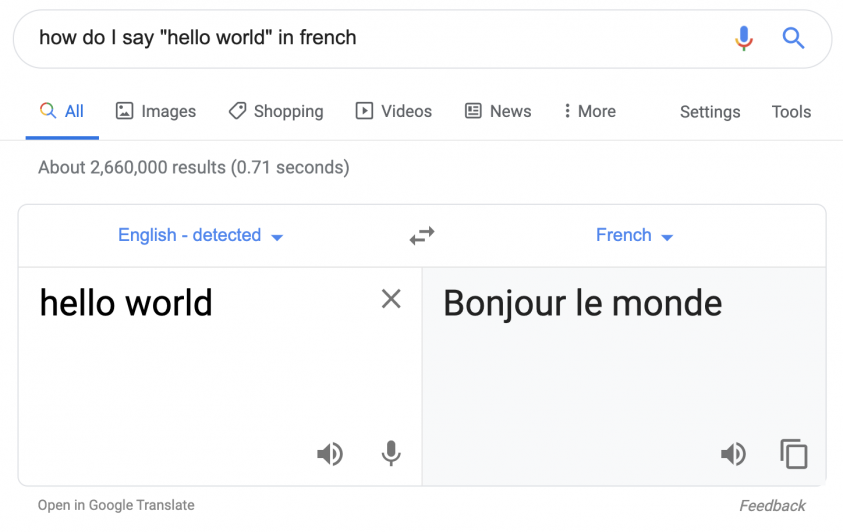
Limit to 1 language per page
It can be tempting only to translate some areas of a site and leave other parts in the initial language.
Some areas where a site might have several languages include:
- The main page is translated, but the other text is still in the initial language.
- Use generated pages such as comments, or discussion forums are in various languages.
In these two scenarios, the intended region and language of the page can be specified by adding hreflang tags.
Nonetheless, several languages on a page can be confusing.
Or worse, they can dilute the user experience.
In some cases, users may understand the content but have problems navigating to other pages.
In the second example, user-generated discussions in more than one language can result in discussions losing context and a frustrated or confused reader.
Fortunately, when you use tools like Google Translate to translate your pages, it will detect all the content including comments.
So, you can be sure that everything will be translated correctly.
There are some scenarios where several languages on a page can be advantageous to readers, like side-by-side translations on language learning sites.
In its multilingual SEO recommendation, Google suggests keeping away from side by side translations.
Nevertheless, if you must take that option, make sure you use hreflang tags.
You can add several tags where appropriate.
Translate metadata
When you develop a multilingual site, you will want to make sure it is not only the content that is translated.
Translating metadata is also important as it will help you rank for the new regions or language you are targeting.
But this is not as simple as changing the words because a keyword in one language might not be the same for another language.
This means you must conduct keyword research into your target markets.
This can easily be carried out through BiQ’s Keyword Intelligence tool.
All you have to do is type a translated keyword in the search bar and choose the region or country you want to rank in.
Then review the results given to help you have an idea of what your target audience might search for.
Search for keywords in other languages
As mentioned above, keywords must be well researched.
Do not just translate word for word.
This a common mistake because most people think that a well-performing keyword in one language will also rank well in another language if translated directly.
To give you an example, the image below shows the search volume for “content marketing” in English.
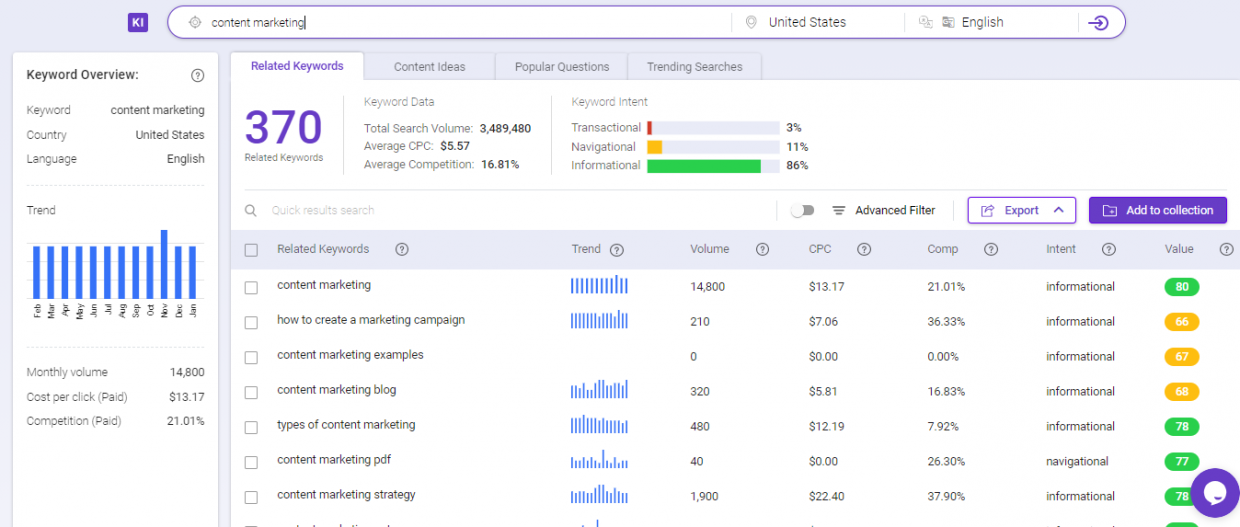
The same word doesn’t have the same interest in Spanish audiences.
A search for the keyword in Spanish through BiQ’s Keyword Intelligence results in a low number of queries.
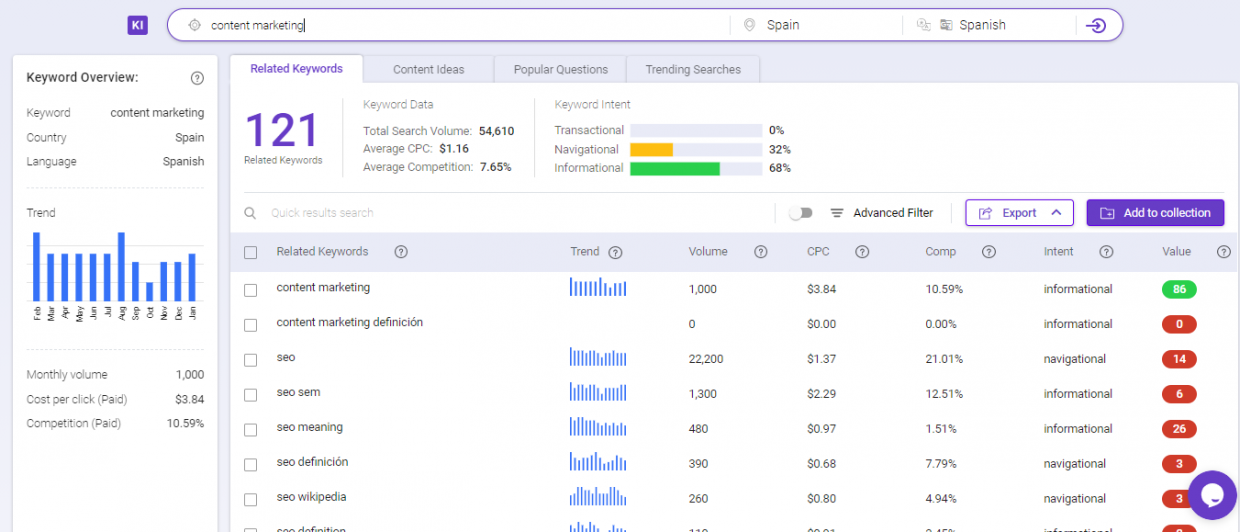
The best thing about the keyword research tool is that you can check phrases in various languages in different regions and get search volume insights from several countries and regions.
You can also target phrases that perform well in other languages other than your own with the goal of driving traffic.
After all, that is the main objective of a multilingual SEO site.
Ensure you’re targeting the right country/region
Let’s say you have a coat-selling company in the United Kingdom.
But you are not sure if it will do well in Spain or France, where it is a bit warmer.
Or perhaps you have a content creation service and wonder how well it will perform in Germany.
Instead of speculating, you can use BiQ’s Keyword Intelligence tool again to find keyword difficulty and international keyword search volume for the target phrases.
The tool will help you evaluate keywords clients are likely to search for in the respective language.
Not only that, it chooses the target country to see search volumes in the location.
What’s more, you can also key in several keywords in the search bar and then check on the left-hand side to see search volumes for different months in different countries.
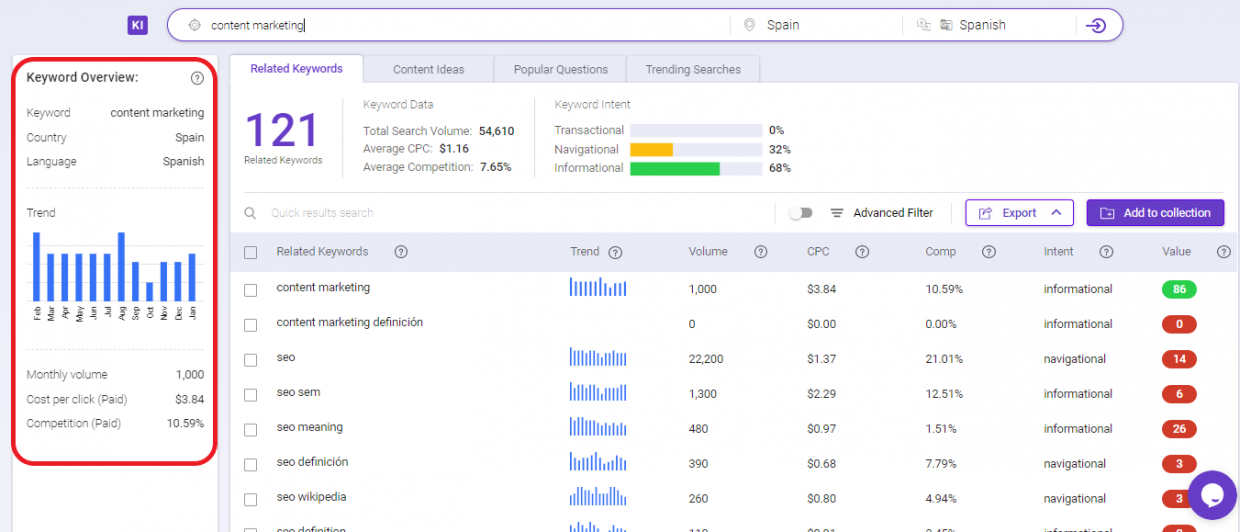
This is important for people targeting several countries (i.e., a Spanish site targeting all Spanish speakers internationally), regardless of their location.
Conclusion
The fact that you are thinking about, or you have already started your multilingual SEO journey, shows that you are not only taking a step forward to drive more traffic but also towards becoming a multilingual SEO expert.
Why?
Because it is a fairly complex subject that requires someone who understands what they are doing.
It is a sophisticated SEO strategy that tries to serve people in several languages and locations.
It also helps you engage a wider audience and rank better in different regions and countries.
Fortunately for you, everything important that you need to know to implement a successful multilingual SEO is mentioned in this guide.
So regardless of whether you are a veteran or a first-timer, this cheat sheet will give you an edge.




